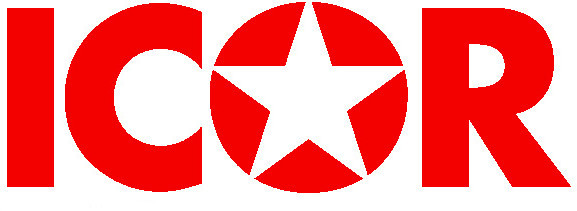Bolshevist lessons about the practical methods of the revolutionary rebellion
Existing translations
In his work Anti-Dühring Engels wrote: “That force, however, plays yet another role in history, a revolutionary role; that, in the words of Marx, it is the midwife of every old society pregnant with a new one, that it is the instrument with the aid of which social movement forces its way through and shatters the dead, fossilised political forms….”
Lenin orientated himself towards the works of Marx and Engels when he wrote: “Major questions in the life of nations are settled only by force.” (LCW 31/346)
On the basis of this revolutionary logic and starting from the revolutionary practice of the Bolsheviks under Lenin's leadership we become aware of completely new aspects of the armed uprising, and thus our discussion in this meeting will concentrate on the following lessons for the revolutionary practice:
1 – Strategy and tactics of the armed insurrection
2 – Relationship between the democratic and the socialist revolution
3 – Flexibility in the fighting tactics
4 – Forms of organization and the slogans
These four topics might seem contradictory, but in reality they build a dialectical and organic unity on three levels:
1 – The four topics are necessary elements of strategy and tactics of the class struggle.
2 – The four topics are practical tasks of the revolutionary fighters during the armed insurrection.
3 – The four topics demand forms of organization that are geared precisely to the needs of the actual political situation and which are based on a very precise political program as well as on a concrete analysis of the concrete situation.
Strategy and tactics of the armed insurrection
The development of the Bolshevist experience since the foundation of the Russian social-democratic party reminds us through Lenin's work What is to be done? of 1902 of a first stage of strategy that can be summarized in the building of the class party of a new type and the winning of new, militant members; all this with the help of a kind of agitation and propaganda that follows a tactic of fulfilling the daily current affairs and thus preparing the forces, deepening the movement etc.
Soon this first stage was replaced by a new one, a stage with its climax in 1905, where the political tasks within the masses of the workers and peasants accumulated.
This subjective development of the party was a parallel process to the objective development of economic and social crises in all Russia, which was intensified by Russia's defeat at the hands of the Japanese army. So this is the stage of an acute revolutionary crisis that developed quickly and provoked turmoil and mass uprisings (January and February 1905). In May 1905 the Third Party Congress of the Russian social-democrats in London answered this new situation by emphasizing the new strategic and tactical view. In his work Two Tactics of Social Democracy in the Democratic Revolution Lenin defends exactly this strategy and tactics pursued by the Bolsheviks in the revolution of 1905, especially during the uprisings in October and December.
This understanding of the strategy and tactics of the armed insurrection worked out at the Third Party Congress, 1905, and afterwards deepened and put into practice in the October Revolution of 1917, led to outstanding results.
This first topic of block 3 probably raises several questions among the participants, e.g.:
1 – What must the concrete situation be like in order to be successful in using such a strategy and tactics of the armed insurrection by a revolutionary party?
2 – Up to which degree was the Bolshevik strategy and tactics of the armed insurrection in October 1917 successful?
3 – Can revolutionary parties and organizations nowadays use the same strategy and tactics in consideration of the technical and industrial development of the military equipment and the apparatus of violence of the class enemy?
The participants are invited to take up this topic with their different points of view.
The relationship of the democratic with the socialist revolution
In his work Two Tactics of Social Democracy in the Democratic Revolution Lenin reminds about a warning of Marx who said: “To confuse the petty-bourgeoisie’s struggle for a complete democratic revolution with the proletariat’s struggle for a socialist revolution threatens the socialist with political bankruptcy,” and he added: “our slogan -- a revolutionary-democratic dictatorship of the proletariat and the peasantry -- fully safeguards us against this mistake. While recognizing the uncontestably bourgeois nature of a revolution incapable of directly overstepping the bounds of a mere democratic revolution, our slogan advances this particular revolution and strives to give it forms most advantageous to the proletariat; consequently, it strives to make the utmost of the democratic revolution in order to attain the greatest success in the proletariat’s further struggle for socialism.” (LCW 9/87)
According to this quotation Lenin clearly differentiates the petty-bourgeois democratic revolution from the proletarian socialist revolution, but at the same time the revolutionary Bolshevik strategy and tactics connected both in defining the one (democratic revolution) as a causal condition of the other (socialist revolution). And in order to fulfill this Lenin demands a close alliance of the proletariat and the poor peasants, who are the direct beneficiaries of this democratic revolution, and that can lead to the successful socialist revolution of the proletariat.
This view becomes very clear in Lenin's works since the revolution of 1905, and accordingly the Bolshevik fighters were able to carry out successfully their socialist revolution of October 1917, in a process of realizing and deepening this view.
Here the participants can ask several questions and discuss them, too.
1 – Why this insistence on a necessary transition via a bourgeois democratic revolution before starting a socialist revolution?
2 – Is this strategy and tactics a historical peculiarity caused by the concrete situation in Russia of that time, where first and foremost, before starting a socialist revolution, they wanted to get rid of the autocratic Tsarist reign, feudalism and slavery; or can you understand it (strategy and tactics) as a universally valid law that you can apply nowadays to the situation of any country?
The participants can explain their point of view to these questions, too.
The flexibility in the tactics of struggle
As admirer of the works of Carl von Clausewitz about war, Lenin converted his thesis, which says that “war is simply the continuation of politics by other means”, in a remarkable way; for during the clashes in class struggle the ruling class uses all its repressive human power and all its technical and material means to destroy and suppress all democratic demands of the proletariat and the poor peasants. The development of confrontations and battles between the uneven forces of both classes required very much flexibility of the proletarian tactics, and that is part of the art of war in total agreement with dialectic materialism and Marxist-Leninist science.
Here are now examples of questions that could be asked and deserve to be discussed:
1 – Were there concrete situations which required the use of flexible tactics by the Bolshevik revolutionaries during the October Revolution in order to reach their aims?
2 – Which part did the concepts necessity and chance possibly play in any decisions and in the flexibility of the tactics of struggle during the armed uprising in October 1917?
Other questions and answers can be raised by different participants.
Forms of organization and slogans
-
In his contributions of 1923 under the title “Strategy and Tactics of the Russian Communists” Stalin explained to the members of the workers’ clubs and the communist students at university that during the class struggle it was necessary to use all possible forms of organization and adapt them to the concrete situation. Thus the forms of organization change corresponding to the forms of the concrete struggles.
According to Stalin the chosen organization always has to be adapted to the forms of struggle both in the political and military fields. And in this case there are numerous possibilities: underground organizations of professional revolutionaries under the regimes of tyrants, educational, trade union, cooperative or parliamentary organizations, factory committees, committees of peasants, strike committees, committees of the workers' and the soldiers' deputies, committees of revolutionary soldiers. The revolutionary proletarian party can combine all these forms of organizations, especially in times of mass actions and uprisings.
These are the essential forms of organization on which the proletariat can and must rely in the struggle against the solely ruling bourgeoisie under the given circumstances. Stalin insisted that the party must adopt all these forms of organization, develop them further and combine them always wisely. On the other hand, Stalin always pointed out the great importance of deciding on the correct formulations of the slogans, which have to express the aims of the uprising and the class war or the confrontation.
The slogan is, according to Stalin, the clear and concise expression of the direct or long-term aims of the struggle given by a leading group. The different slogans corresponding to the aims of the battle either cover a whole historic period, special phases or particular episodes of that period.
The participants of this block can ask diverse questions concerning the forms of organization and slogans and discuss them.
Document Actions




